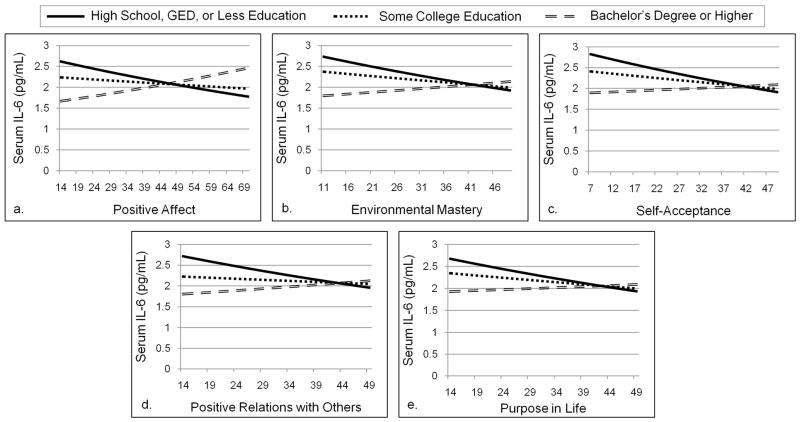Figure 2.
Well-being moderated the effect of education on IL-6. Lines represent simple effects of psychosocial factors on IL-6 for categories according to educational attainment, controlling for age, gender, smoking status, alcohol consumption, caffeine consumption, physical activity, medication usage, BMI, WHR, and chronic health conditions. The inverse relationship between IL-6 and well-being for individuals with a high school education or less is significant in all panels, with the exception of panel d, where the simple effect was marginally significant. The positive relationship between positive affect and IL-6 for individuals with a college degree or higher was also significant. Figure 2a. With education interpreted as a continuous variable, the simple effect of positive affect at one standard deviation below the mean on education was not significant. Figure 2b. With education interpreted as a continuous variable, the simple effect of environmental mastery at one standard deviation below the mean on education was marginally significant. Figure 2c. With education interpreted as a continuous variable, the simple effect of positive relations with others at one standard deviation below the mean on education was not significant.

